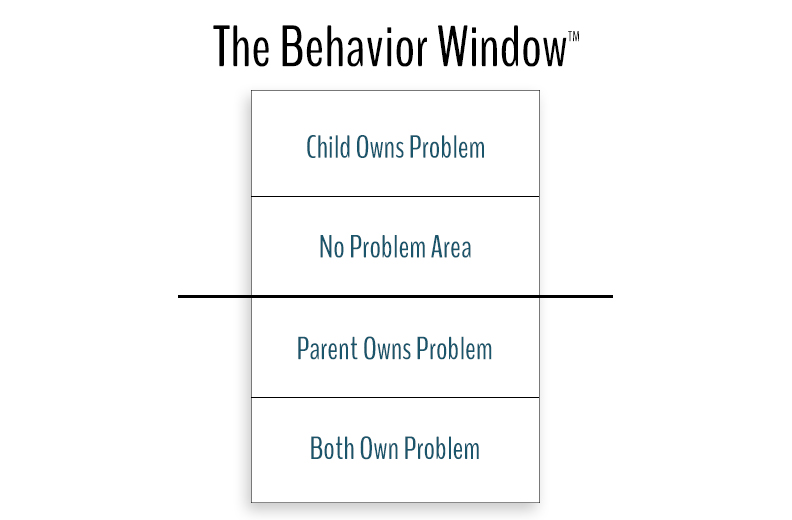President of GTI (excerpted from the P.E.T. Participant Workbook)
In your relationship with your child, you will have one of two attitudes toward everything you hear her say or see her do – acceptance or unacceptance.
Some of your child’s behaviors are indications that her needs are not being met; she is sending out signals that she is feeling troubled or upset. For example, you hear her crying or saying “I don’t have any friends.” These behaviors are placed above the line in the window, in a special area at the top, CHILD OWNS THE PROBLEM. You feel accepting of the child and want to help her, but you don’t own her problem.
P.E.T. teaches a set of skills for helping the child take the responsibility for solving her own problems.
Also appearing above the Line of Acceptance is the NO PROBLEM AREA. These are all of the behaviors that are acceptable to you and are not cues or clues that the child has a problem. Both of you are getting your needs met.
P.E.T. teaches skills and concepts for keeping your relationship in this area and for enhancing it.
When you feel unaccepting of the child’s behavior (placing it below your line), YOU OWN THE PROBLEM. To solve it, you will want to take appropriate action to influence the child to change that behavior so that it becomes acceptable to you.
P.E.T. teaches some powerful tools to do that effectively without damaging the relationship.
There are situations in which your needs and those of your child clash. Both of you are experiencing feelings of unacceptance and dissatisfaction; you have a conflict. At these times, BOTH OWN THE PROBLEM.
P.E.T. offers a way to resolve these inevitable conflicts so that the needs of both you and the child are met.
The purpose of P.E.T. is to enable parents to enlarge the NO PROBLEM AREA in their relationships with each of their children through the use of skills and to keep their relationships in this area as much as possible.


